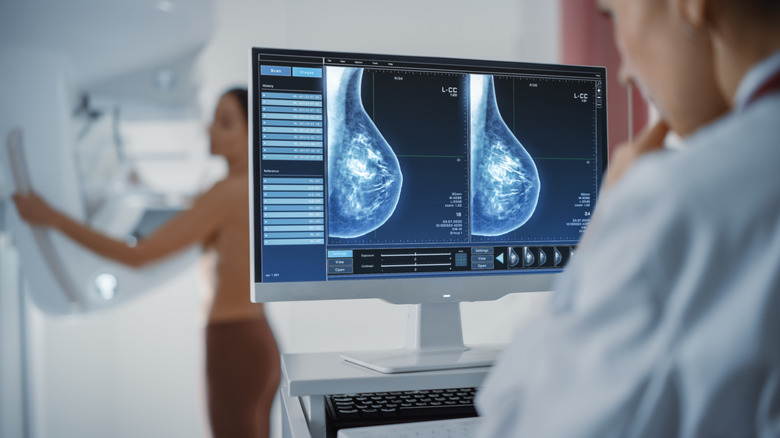Why Having A Tattoo Can Affect Your Mammogram
Not that long ago, tattoos were relatively rare, and according to one study were generally seen as symbols of belonging to fringe or marginalized groups (via US National Library of Medicine). Perceptions began to shift in recent years, with more people viewing tattoos as vehicles for the expression of individuality, artistic beauty, personal history, and spirituality. Alongside this change in perception, the number of people with tattoos has only gone up. Market research company IPSOS reports that as of 2019, roughly 30% of Americans had a tattoo, up from 21% in 2012, and those under the age of 55 are twice as likely as their elders to have at least one tattoo.
People in this younger generation are only now coming into the age range where they begin to need regular mammograms. This has led to an increased awareness around the way our bodies react to tattoos and, specifically, what that can mean for mammogram results.
The ink can cause false positives
When most people talk about a body's reaction to tattoos, they focus on skin reactions. But there is just as much going on under the surface. And when it comes to cancer screenings, these invisible reactions are arguably more important.
As Today reports, our bodies view tattoo ink as infections or a foreign invader in the body. When those tattoos are on our upper bodies, our immune system sends cells to the tattoo sites. Those cells then collect some of the ink and bring it back to the lymph nodes, the locations where our bodies learn to fight and deal with infections. Once the ink is there, however, it stays. It doesn't harm us and it doesn't cause any problems, at least not until we have to undergo a mammogram.
Then, as Dr. Margarita Zuley told Today, the ink causes white spots to appear in the lymph nodes on the ultrasound. According to Dr. Zuley, such spots can have many causes, including lotion or deodorant on the skin, but some of those causes are cancer-related. And until more tests are done, doctors can't tell which is which. This is why it's important to tell your doctor if you have tattoos, so they know that the ink might be the source of the worrisome spots on the scan.


